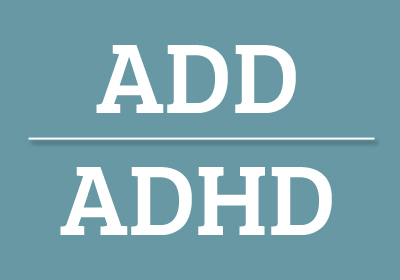What Is ADD/ADHD?
The current understanding of Attention Deficit Disorder (ADD) and Attention Deficit/Hyperactivity Disorder (AD/HD—this is the current favored spelling) is that the first is a subset of the second, which is an overarching category that describes three specific disorders and others that have not been typed. The placement of the slash is meant to indicate that hyperactivity is not a manifestation in every type of AD/HD.

Parents should be aware that each of these symptoms may be present to a lesser degree than in AD/HD as a component of normal behavior at particular stages of child development. The fact that impulsivity, for example, is a characteristic of AD/HD subtypes does not mean that all impulsivity is abnormal or indicative of a disorder. But whereas children in the normal range learn to limit their impulsivity children with AD/HD need additional help and attention to control and direct their impulsivity.
The way that these symptoms appear with AD/HD is as follows:
• Children with predominantly hyperactive-impulsive subtype have symptoms of hyperactivity and impulsivity, but do not have issues with attentiveness.
• Children with predominantly inattentive subtype (the name that is now used to mean the same thing as Attention Deficit Disorder was in the past) are inattentive, but not hyperactive or impulsive.
• Children with combined subtype exhibit hyperactivity, impulsivity, and inattentiveness—all three of the symptoms.
• Children may also have AD/HD not otherwise specified. This is used when a child has issues with one or more of the three symptoms to a degree that is not developmentally appropriate but does not meet the diagnostic criteria for any of the three defined subtypes.
Statistics on AD/HD
In 2008, the Center for Disease Control (CDC) issued a report stating that approximately five percent of American children age 6 to 17 have been diagnosed with AD/HD, according to parental reports. Because the study only covered diagnosed cases, the incidence is likely to be higher. The study found that boys were twice as likely to be diagnosed with AD/HD as girls, and that teens were more likely to have been diagnosed than were younger children.
Diagnosis of AD/HD for Teens
The diagnostic criteria for AD/HD is not different for teens than for younger children. The criteria require the existence of six symptoms of either inattention or six symptoms of hyperactivity-impulsivity.
In either case, the symptoms must have been present for a minimum of six months, and be present to a degree that is developmentally inappropriate and causes some impairment of function. At least some of the symptoms must have been present prior to age seven, and the effects must be apparent in at least two settings, such as both at home and at school. In the case of hyperactivity-impulsivity, the symptoms must also be disruptive.
These limitations help to avoid diagnosing temporary behaviors that might be a response to a particular finite situation and resolve in several months. They also help differentiate AD/HD from an athletic, exuberant, or occasionally day-dreaming child.
The symptoms of inattention include careless mistakes, trouble focusing, seeming not to listen, lack of follow through, trouble with organization, avoidance of long tasks, frequent losing or misplacing of possessions, distractibility, and forgetfulness.
The symptoms of hyperactivity-impulsivity include fidgeting or squirming, inability to stay seated for long periods, restlessness, inability to do activities quietly, “Energizer Bunny” energy, excessive talking, interrupting, difficulty waiting, and intrusive behavior.
Help for Teen AD/HD
If you suspect that your child may have AD/HD, the first thing you need is a diagnoses to make sure that the symptoms are not indicative of some other issue. This can be done by a health care provider, such as a pediatrician or psychologist.
Treatment of AD/HD will vary somewhat depending on which of the types is diagnosed. Depending on the situation, a combination of medication and behavioral therapy may be suggested.
If you live in Florida, you might be interested in the study of Teen ADHD at the Florida Clinical Research Center in Bradenton/Sarasota LI. If so, you can get more information here: http://www.flcrc.com/Landing-Pages/Studies/Bradenton-Sarasota-Studies/ADHD/Teen-ADD/ADHD-Study-Bradenton/Sarasota-LI.html
